Wheat community meets in Afghanistan for 2nd ARIA-CIMMYT wheat workshop
Bringing together Afghanistan’s wheat stakeholders, the second ARIA-CIMMYT wheat workshop was held during 01-03 September 2012 on the Ministry of Agriculture, Irrigation and Livestock (MAIL) campus. This year the workshop focused on strengthening agronomy and technology delivery. It was attended by a total of 50 participants from organizations including the Agricultural Research Institute of Afghanistan (ARIA); the MAIL Department of Extension and Agricultural Development; the MAIL Improving Agricultural Inputs Delivery System (IAIDS) project; the Japan International Cooperation Agency (JICA); the Food and Agriculture Organization of the United Nations (FAO); the United States Agency for International Development (USAID); and NGOs Joint Development Associates International (JDA), Solidarités International (SI), Norwegian Project Office/Rural Rehabilitation Association for Afghanistan (NPO/ RRAA), and the Afghan Women’s Resource Center (AWRC). R.P. Singh, former Principal Investigator in Agronomy with the Indian Council of Agricultural Research’s All India Coordinated Wheat Improvement Project, served as the resource person for the event.
The workshop was inaugurated by Noor Ahmad Popal, national wheat sector coordinator, on behalf of the director general of planning, MAIL. Popal stressed the need to give more emphasis to crop production management in general and to that of rainfed wheat in particular, suggesting that the country’s annual wheat needs would be around seven million tons by 2020. Rajiv Sharma, CIMMYT country liaison officer for Afghanistan, welcomed the participants and noted that this workshop would indeed look at crop production management more critically. He also emphasized the need for an efficient varietal release process, as new release proposals had been delayed in the recent past.
Over the three days, the workshop included presentations of wheat research results by researchers from all of Afghanistan’s wheat research stations. Abdul Latif Rasekh (ARIA head of agronomy) presented the current status of understanding on wheat agronomy in Afghanistan, followed by a presentation from R.P. Singh on imperatives in wheat agronomic research. A joint presentation on demonstration of technologies in farmers’ fields was given by CIMMYT and the NGOs (JDA, SI, NPO/RRAA, and AWRC). On the third day, Singh gave a second talk on “Gains of Green Revolution: Problems and Opportunities”, which attracted a large audience. This final day also saw presentations on the technical program for the 2012- 13 season for the disciplines of crop improvement, agronomy, plant pathology, and technology demonstrations. Qudratulla Soofizada (technical change management specialist, ARIA, MAIL), who recently returned from participation in the 51st All India Wheat & Barley Research Workers’ Meeting proposed a model based on the Indian program that could be adopted in Afghanistan to coordinate wheat research. The workshop made several recommendations, such as initiating varietal evaluation trials by zone from the 2012-13 season onwards. Mohammad Qasem Obaidi, Director of ARIA, expressed great satisfaction on the outcomes of the workshop and hoped to initiate similar workshops for more crops.
Afghanistan’s wheat crop has shown recent signs of revival with a total harvest of slightly over five million tons in the 2011-12 season. Irrigated wheat productivity was comparable to the global average at around 3 tons per hectare, but the lower yield of rainfed wheat, 1.1 tons per hectare, brought the national average yield to around 1.9 tons per hectare. Afghanistan’s import needs are set to fall this year, to around half a million tons for the current marketing season. The country’s community of wheat researchers is now geared up to move further in enabling Afghanistan to harvest enough wheat to achieve selfsufficiency.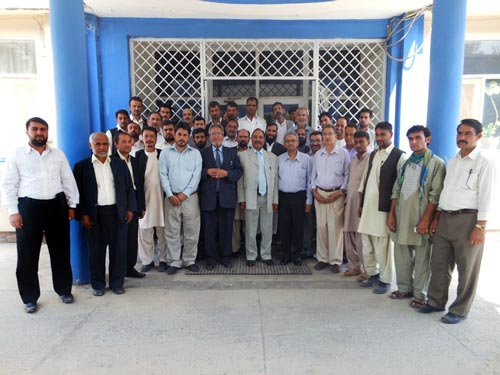
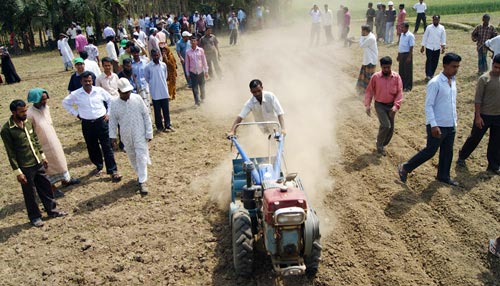 The CIMMYT team in Bangladesh hosted a highprofile field visit on September 1, 2012, for a United States Agency for International Development (
The CIMMYT team in Bangladesh hosted a highprofile field visit on September 1, 2012, for a United States Agency for International Development (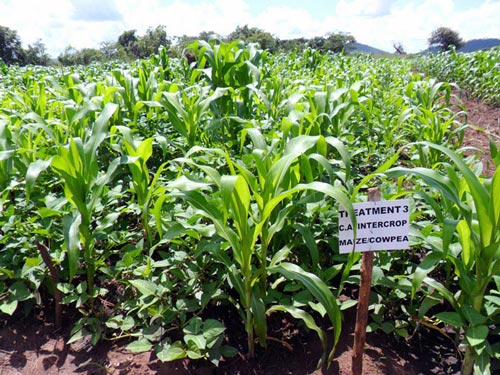 To reduce farm labor, improve soil productivity and crop yields, and contribute towards food security of farming households in the changing climate environment, CIMMYT, the
To reduce farm labor, improve soil productivity and crop yields, and contribute towards food security of farming households in the changing climate environment, CIMMYT, the  Having experienced CA, both Tembo and Zulu hope that more farmers will adopt the practice. “This project should continue so that others can learn from us that we do things differently now,” she added. Learning about CA has enabled Tembo to lessen the challenges her family faces, especially the tedious labor in preparing the field. Zulu is proud to see that other farmers admire what they see on his farm.
Having experienced CA, both Tembo and Zulu hope that more farmers will adopt the practice. “This project should continue so that others can learn from us that we do things differently now,” she added. Learning about CA has enabled Tembo to lessen the challenges her family faces, especially the tedious labor in preparing the field. Zulu is proud to see that other farmers admire what they see on his farm.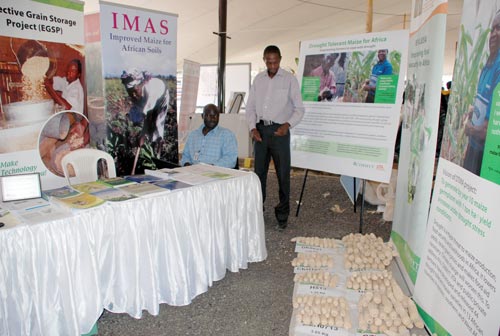 As part of European Union Day celebrations in Kenya, an exhibition to showcase research and development activities supported by the EU or its member states took place on 09 May 2012 at the International Centre of Insect Physiology and Ecology (ICIPE) in Nairobi. CIMMYT was among 12 exhibitors participating and featured the projects Drought Tolerant Maize for Africa (DTMA), Insect Resistant Maize for Africa (IRMA), Effective Grain Storage (EGS), Improved Maize for African Soils (IMAS), and Sustainable Intensification of Maize-Legume Cropping System for Food Security in Eastern and Southern Africa (SIMLESA). On display were cobs of CIMMYT and commercial maize hybrids harvested from drought stressed plots alongside cobs of the same hybrids from fully irrigated plots. Several CIMMYT publications were available for visitors.
As part of European Union Day celebrations in Kenya, an exhibition to showcase research and development activities supported by the EU or its member states took place on 09 May 2012 at the International Centre of Insect Physiology and Ecology (ICIPE) in Nairobi. CIMMYT was among 12 exhibitors participating and featured the projects Drought Tolerant Maize for Africa (DTMA), Insect Resistant Maize for Africa (IRMA), Effective Grain Storage (EGS), Improved Maize for African Soils (IMAS), and Sustainable Intensification of Maize-Legume Cropping System for Food Security in Eastern and Southern Africa (SIMLESA). On display were cobs of CIMMYT and commercial maize hybrids harvested from drought stressed plots alongside cobs of the same hybrids from fully irrigated plots. Several CIMMYT publications were available for visitors. Food security is highlighted as one of the main priorities for Bangladesh in the country’s Investment Plan, and a sustainable seed supply constitutes a pivotal component of food security. With this in mind, a maize and wheat “seed summit” was jointly organized by the Ministry of Agriculture (MoA) and CIMMYT at the Hotel Lake Castle in Dhaka on 26 April 2012.
Food security is highlighted as one of the main priorities for Bangladesh in the country’s Investment Plan, and a sustainable seed supply constitutes a pivotal component of food security. With this in mind, a maize and wheat “seed summit” was jointly organized by the Ministry of Agriculture (MoA) and CIMMYT at the Hotel Lake Castle in Dhaka on 26 April 2012.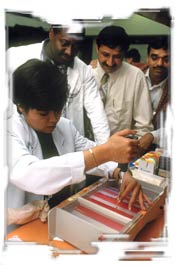 A USAID-funded study by Rutgers economist Carl Pray concludes that present and future impacts of the Asian Maize Biotechnology Network (AMBIONET)—a forum that during 1998-2005 fostered the use of biotechnology to boost maize yields in Asia’s developing countries—should produce benefits that far exceed its cost.
A USAID-funded study by Rutgers economist Carl Pray concludes that present and future impacts of the Asian Maize Biotechnology Network (AMBIONET)—a forum that during 1998-2005 fostered the use of biotechnology to boost maize yields in Asia’s developing countries—should produce benefits that far exceed its cost. A USAID-funded study by Williams College economist Douglas Gollin shows that modern maize and wheat varieties not only increase maximum yields in developing countries, but add hundreds of millions of dollars each year to farmers’ incomes by guaranteeing more reliable yields than traditional varieties.
A USAID-funded study by Williams College economist Douglas Gollin shows that modern maize and wheat varieties not only increase maximum yields in developing countries, but add hundreds of millions of dollars each year to farmers’ incomes by guaranteeing more reliable yields than traditional varieties.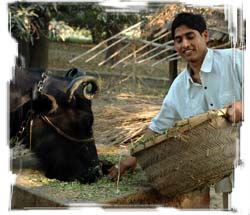 A daring move by a young farmer in India has changed his life and his father’s.
A daring move by a young farmer in India has changed his life and his father’s.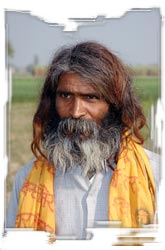
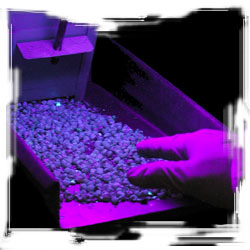 A CIMMYT research team is using an old but effective technique to get a head start on some very advanced crop science. Their aim is to breed high yielding maize that also resists infection by a dangerous fungus. As part of a USAID-funded project, the team uses ultraviolet or black light to identify maize that inhibits Aspergillus flavus, a fungus that produces potent toxins known as aflatoxins.
A CIMMYT research team is using an old but effective technique to get a head start on some very advanced crop science. Their aim is to breed high yielding maize that also resists infection by a dangerous fungus. As part of a USAID-funded project, the team uses ultraviolet or black light to identify maize that inhibits Aspergillus flavus, a fungus that produces potent toxins known as aflatoxins.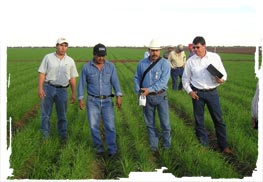 CIMMYT shows technology to enhance farmer income and reduce ocean pollution
CIMMYT shows technology to enhance farmer income and reduce ocean pollution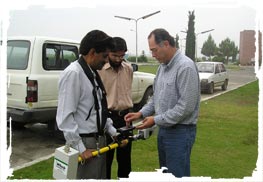

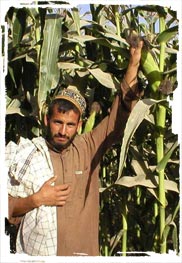 An important component of a current ACIAR-funded project (“Wheat and Maize Productivity Improvement in Afghanistan”) has included collaborative work with farmers and non-government and international organizations to verify in farmers’ fields the performance and acceptability of improved wheat and maize varieties. For wheat, the project uses two approaches:
An important component of a current ACIAR-funded project (“Wheat and Maize Productivity Improvement in Afghanistan”) has included collaborative work with farmers and non-government and international organizations to verify in farmers’ fields the performance and acceptability of improved wheat and maize varieties. For wheat, the project uses two approaches: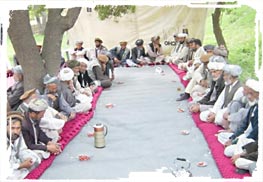
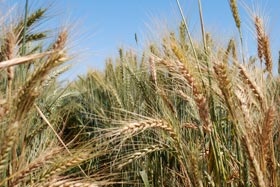 In 2009, out of a global population of 6.8 billion people, more than 1 billion regularly woke up and went to bed hungry. By 2050 the population is expected to grow to 9.1 billion people, most of whom will be in developing countries. Unless we can increase global food production by 70%, the number of chronically hungry will continue to swell. To help ensure global food security, a new research consortium aims to boost yields of wheat—a major staple food crop.
In 2009, out of a global population of 6.8 billion people, more than 1 billion regularly woke up and went to bed hungry. By 2050 the population is expected to grow to 9.1 billion people, most of whom will be in developing countries. Unless we can increase global food production by 70%, the number of chronically hungry will continue to swell. To help ensure global food security, a new research consortium aims to boost yields of wheat—a major staple food crop.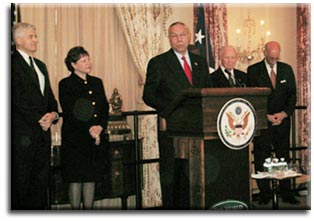 US Secretary of State Colin Powell paid tribute to Iowa and in particular to one man, known as the father of the Green Revolution, who was born there 90 years ago.
US Secretary of State Colin Powell paid tribute to Iowa and in particular to one man, known as the father of the Green Revolution, who was born there 90 years ago.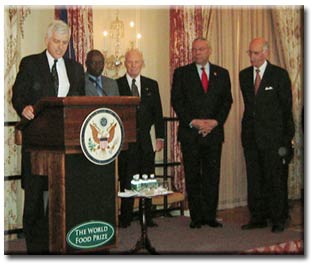
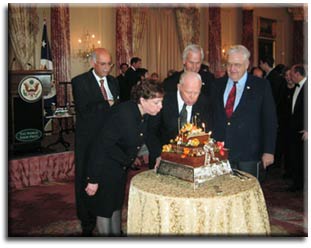
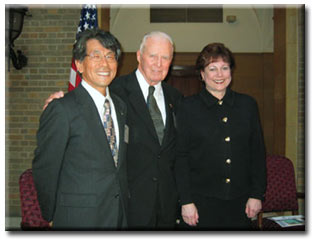
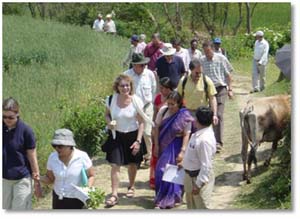 On the first day of the field visits, about 200 farmers from nearby villages greeted the delegation and expressed appreciation for new practices that were helping them to diversity agricultural production and conserve resources such as water and soil. The delegation was welcomed in Kapriwas, Gurgaon by senior officials of the
On the first day of the field visits, about 200 farmers from nearby villages greeted the delegation and expressed appreciation for new practices that were helping them to diversity agricultural production and conserve resources such as water and soil. The delegation was welcomed in Kapriwas, Gurgaon by senior officials of the 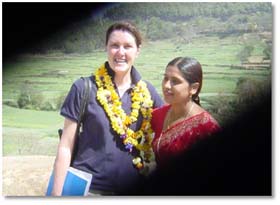 CIMMYT’s Board and staff are grateful to P.P. Manandhar, Nepal’s Secretary of Agriculture, and officials at the Ministry of Agriculture and Cooperatives for their constant support for CIMMYT’s South Asia Regional Office, and to NARC Executive Director R.P. Sapkota and his colleagues for support and field visits. They are also most grateful to ICAR Director General Mangla Rai, Deputy Director of Crops and Horticulture G. Kalloo, and the many representatives of experiment stations, colleges, and universities in India who made the visit a success. The opportunity to meet and visit the field with representatives of DFID, FAO, the Japan International Cooperation Agency, SDC, USAID, and the World Bank, among others, was also greatly appreciated.
CIMMYT’s Board and staff are grateful to P.P. Manandhar, Nepal’s Secretary of Agriculture, and officials at the Ministry of Agriculture and Cooperatives for their constant support for CIMMYT’s South Asia Regional Office, and to NARC Executive Director R.P. Sapkota and his colleagues for support and field visits. They are also most grateful to ICAR Director General Mangla Rai, Deputy Director of Crops and Horticulture G. Kalloo, and the many representatives of experiment stations, colleges, and universities in India who made the visit a success. The opportunity to meet and visit the field with representatives of DFID, FAO, the Japan International Cooperation Agency, SDC, USAID, and the World Bank, among others, was also greatly appreciated.